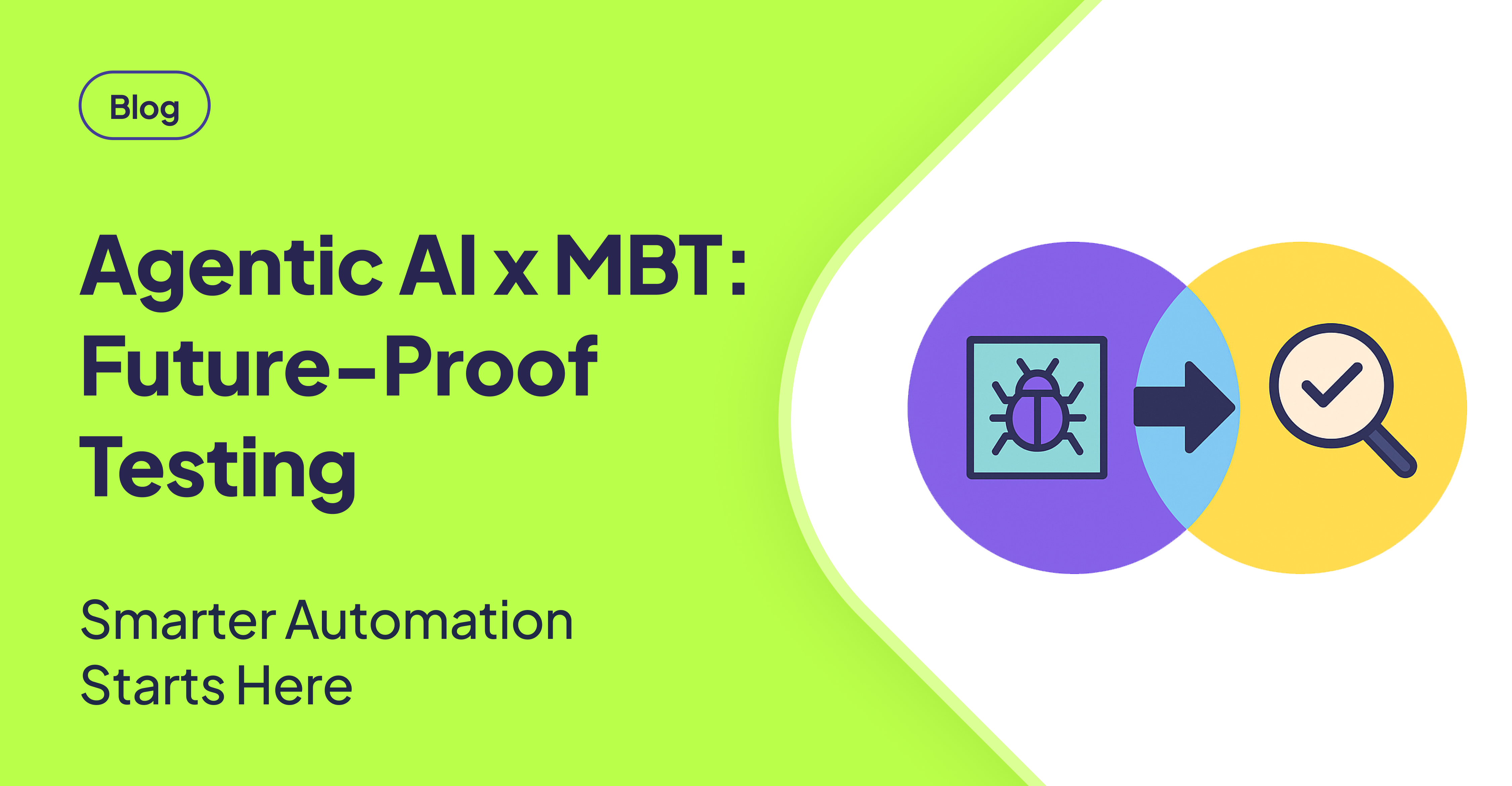TLDR
Agentic AI enhances Model-Based Testing (MBT) by providing dynamic UI exploration and adaptation, addressing the challenges of modern UI complexity and frequent updates in software testing. This synergy enables QA teams to maintain comprehensive coverage, accelerate releases, and reduce the burden of continuous test maintenance.
Introduction
QA teams often struggle to keep up with the increasing complexity, fragmentation, and rapid evolution of modern applications. Traditional automated scripts and even robust Model-Based Testing (MBT) approaches can fall short when dealing with unpredictable user interfaces and frequent updates. Discover how Agentic AI complements MBT, enabling QA teams to maintain coverage, accelerate releases, and significantly reduce the burden of continuous test maintenance in today's fast-paced software landscape.
The Power of Model-Based Testing (MBT)
Model-Based Testing (MBT) is a software quality approach that uses abstract models, such as state diagrams or workflows, to define expected system behaviors. Automated tools then generate test cases directly from these models. This offers significant advantages: broad and systematic scenario coverage, ease of updates by simply modifying the model and regenerating tests, and faster test creation, especially for complex systems. [STAT: Studies show that MBT can reduce test creation time by up to 40% in complex systems.] However, MBT also presents challenges, including the need for skilled modeling effort, an inability to adapt to unexpected UI shifts, and the requirement for frequent updates when UIs undergo changes.
Agentic AI: Reinforcing MBT's Foundation
Agentic AI introduces goal-driven, autonomous agents that visually interpret UIs and adapt in real-time. Unlike static scripts or rigid models, these agents explore the UI based on predefined objectives, mimicking real user behavior. [STAT: Agentic AI can identify and adapt to UI changes 70% faster than traditional script-based automation.] This dynamic exploration automatically learns new UI paths, while adaptive recovery allows these agents to complete tasks even when UI elements move or change. Furthermore, rapid discovery helps find edge cases that MBT models may miss. Together, Agentic AI and MBT provide QA teams with both broad, model-driven validation and real-world flexibility.
The Synergistic Relationship Between Agentic AI and MBT
Agentic AI and MBT aren't competitors; they're complementary forces that provide a more robust testing strategy when combined. MBT excels in systematic, model-based coverage, ensuring predictable paths are thoroughly tested. Agentic AI, on the other hand, offers adaptive, UI-driven exploration, dynamically adjusting to changes. MBT requires model rework to tolerate UI changes, whereas Agentic AI adjusts dynamically on its own. MBT is best suited for core business logic and compliance flows, while Agentic AI is ideal for testing dynamic layouts and personalization. By pairing these approaches, QA teams can ensure both predictable coverage and resilience to rapid UI evolution.
Industry Applications: Real-World Examples
Several industries can benefit from combining MBT and Agentic AI to achieve more comprehensive testing:
- Retail Apps: MBT can validate core checkout and account workflows, while Agentic AI tests dynamic promotions and UI experiments.
- Banking Systems: MBT ensures the integrity of transaction paths, while Agentic AI explores device-specific UI rendering variations.
- Healthcare Portals: MBT covers regulated patient flows, ensuring compliance, while Agentic AI handles the complexities of third-party UI embeds.
[STAT: Healthcare portals using a combination of MBT and Agentic AI have reported a 30% reduction in UI-related defects.] These examples highlight how the combined approach addresses both critical functionality and the ever-changing user experience.
Implementing the Combined Approach: Key Considerations
Successfully integrating MBT and Agentic AI requires careful planning and a strategic approach:
- Team Expertise: QA teams must develop expertise in both abstract modeling (for MBT) and AI agent configuration.
- Platform Selection: Choosing testing platforms that seamlessly blend MBT with agentic exploration is crucial for streamlined workflows.
- Metrics & KPIs: It's important to track new KPIs, such as autonomous exploration coverage, alongside traditional pass/fail rates to measure the effectiveness of the combined strategy.
FAQ
Will Agentic AI replace MBT entirely?
No, the most effective QA teams use Agentic AI to complement MBT. This blended approach balances the structured, predictable nature of MBT with the adaptability and exploratory capabilities of Agentic AI, leading to more robust and comprehensive testing.
Is Agentic AI difficult to implement and manage?
Not necessarily. Many modern testing tools offer visual setup interfaces and seamless integration with existing MBT suites, simplifying the implementation process. Look for solutions that minimize the coding overhead and offer intuitive configuration options.
Can combining MBT and Agentic AI truly reduce test maintenance efforts?
Yes, significantly. By adapting to UI changes autonomously, agentic agents drastically cut down on the need for frequent script rewrites and model updates, freeing up QA resources to focus on more strategic testing activities.
Which industries stand to gain the most from this combined approach?
Regulated industries, such as finance and healthcare, particularly benefit. They can leverage MBT for compliance with strict regulations and employ Agentic AI for exploratory testing to uncover unexpected issues and edge cases that might be missed by traditional methods.
What are the initial steps for adopting this integrated strategy?
Start by assessing your existing MBT practices and identifying areas where dynamic UI exploration would be most beneficial. Then, research Agentic AI tools that integrate well with your current testing infrastructure and offer a user-friendly interface for configuration and analysis. Consider starting with a pilot project to evaluate the effectiveness of the combined approach in your specific context.
Conclusion
By combining the strengths of MBT and Agentic AI, QA teams can achieve faster releases, fewer bugs, and resilient test coverage. This blended approach allows for both structured, model-driven testing and dynamic, AI-powered exploration, ensuring comprehensive quality assurance in the face of increasingly complex and rapidly evolving user interfaces. Embrace this synergy to future-proof your testing strategy and deliver exceptional user experiences.
